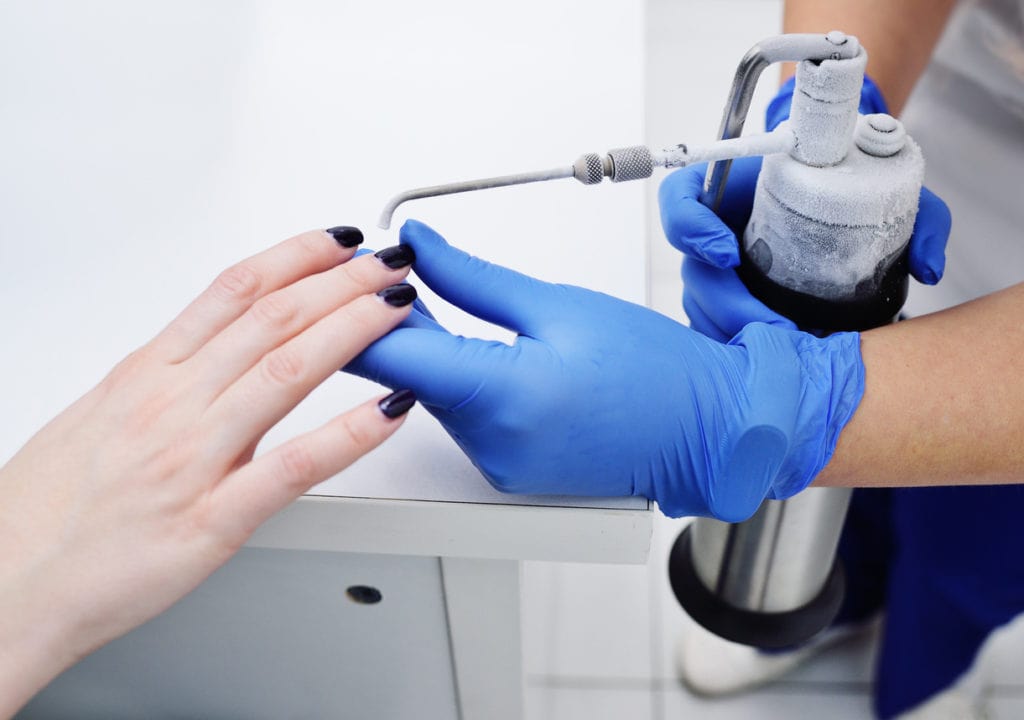
Warts are more than just an unsightly skin issue—they can be painful, persistent, and downright annoying. Caused by the human papillomavirus (HPV), warts often appear on the hands, feet, and other parts of the body. If you’re looking for a fast, reliable, and non-invasive treatment, cryotherapy for warts may be your best option. But how effective is cryotherapy for warts? Let’s dive into everything you need to know.
What Is Cryotherapy?
Cryotherapy, also known as cryosurgery, is a medical treatment that uses extreme cold—typically liquid nitrogen—to freeze and destroy abnormal tissue. When applied to warts, the intense cold kills the wart tissue and triggers an immune response to eliminate the virus.
How the Process Works
-
Preparation: The area around the wart is cleaned, and a healthcare provider ensures there are no underlying skin conditions.
-
Application: Liquid nitrogen is applied using a cotton swab or a spray device directly onto the wart for 10 to 20 seconds.
-
Freezing: The cold temperature freezes the wart and surrounding skin, which may cause a stinging or burning sensation.
-
Healing: A blister forms, followed by scabbing. The wart typically falls off within 1 to 2 weeks.
How Effective Is Cryotherapy for Warts?
This is a common question, and rightly so. How effective is cryotherapy for warts? According to dermatological studies, cryotherapy has a success rate ranging between 60% to 90%, depending on several factors such as the wart’s location, size, and the individual’s immune system.
Factors That Influence Effectiveness
-
Type of wart: Common warts respond more quickly than plantar or periungual warts.
-
Immune response: People with stronger immune systems tend to have better outcomes.
-
Treatment frequency: Multiple sessions (typically every 2–3 weeks) may be necessary for stubborn warts.
-
Depth of wart tissue: Deeper warts may need more aggressive freezing or repeat treatments.
Why Choose Cryotherapy Over Other Treatments?
There are several over-the-counter options like salicylic acid, duct tape, or even laser therapy. However, cryotherapy stands out for a number of reasons:
Speed and Efficiency
Cryotherapy often shows faster results than topical treatments, especially when performed by a trained professional. Some patients see results in just 1–3 sessions.
Minimally Invasive
Unlike surgical removal, cryotherapy doesn’t require cutting, stitching, or significant downtime.
Low Risk of Scarring
Because the freezing is targeted and controlled, cryotherapy has a lower risk of scarring compared to surgical excision.
Cost-Effective
While slightly more expensive than home remedies, cryotherapy is significantly cheaper than laser or surgical options, especially when fewer sessions are needed.
Who Should Consider Cryotherapy for Warts?
Cryotherapy is ideal for individuals who:
-
Have multiple or large warts
-
Need fast results
-
Have not responded to topical treatments
-
Are experiencing discomfort or pain from the wart
However, it may not be suitable for people with:
-
Poor circulation
-
Diabetes (especially for plantar warts)
-
Cold sensitivity or Raynaud’s disease
What to Expect After Cryotherapy
After treatment, it’s common to experience some swelling, redness, or blistering around the area. Here’s how to manage post-treatment care effectively:
Post-Care Tips
-
Keep the area clean and dry for at least 24 hours.
-
Avoid picking or popping blisters to reduce infection risk.
-
Apply a bandage if needed to protect the area.
-
Use mild pain relievers like acetaminophen or ibuprofen if discomfort persists.
Most warts fall off within a week or two, though a follow-up session might be required for complete removal.
Potential Side Effects of Cryotherapy
While generally safe, cryotherapy can come with some mild side effects:
-
Temporary pain or burning
-
Skin discoloration
-
Blistering or scabbing
-
Rarely, nerve damage (if applied improperly)
These side effects are usually short-lived and resolve on their own. Always consult a dermatologist for proper application and care.
Frequently Asked Questions
How long does cryotherapy take to work on warts?
Most people see results within 1 to 3 sessions spaced a few weeks apart. Some warts may respond after just one treatment.
Is cryotherapy painful?
The freezing process may sting or burn for a few seconds. Afterward, the area may feel sore or tender for a day or two.
Can cryotherapy be done at home?
Yes, there are home cryotherapy kits, but professional treatment tends to be more effective due to controlled application and higher-grade nitrogen.
Do warts come back after cryotherapy?
They can, especially if the virus remains in the body or if not all wart tissue was destroyed. Practicing good hygiene and boosting immunity can help prevent recurrence.
Conclusion: Is Cryotherapy Worth It?
So, how effective is cryotherapy for warts? For many people, it’s one of the quickest and most reliable treatments available. Whether you’re dealing with a stubborn plantar wart or a cluster of hand warts, cryotherapy offers a minimally invasive, fast-acting solution that minimizes scarring and downtime.
If over-the-counter treatments haven’t worked or you want faster results, it might be time to speak with a dermatologist about cryotherapy. It’s safe, efficient, and most importantly—effective.